A police officer was hit by an arrow on Sunday outside the Hong Kong Polytechnic University (PolyU) as violent clashes broke out between pro-democracy protesters and law enforcement.

Police deployed tear gas, projectiles, and fired blue dye from water cannon trucks.
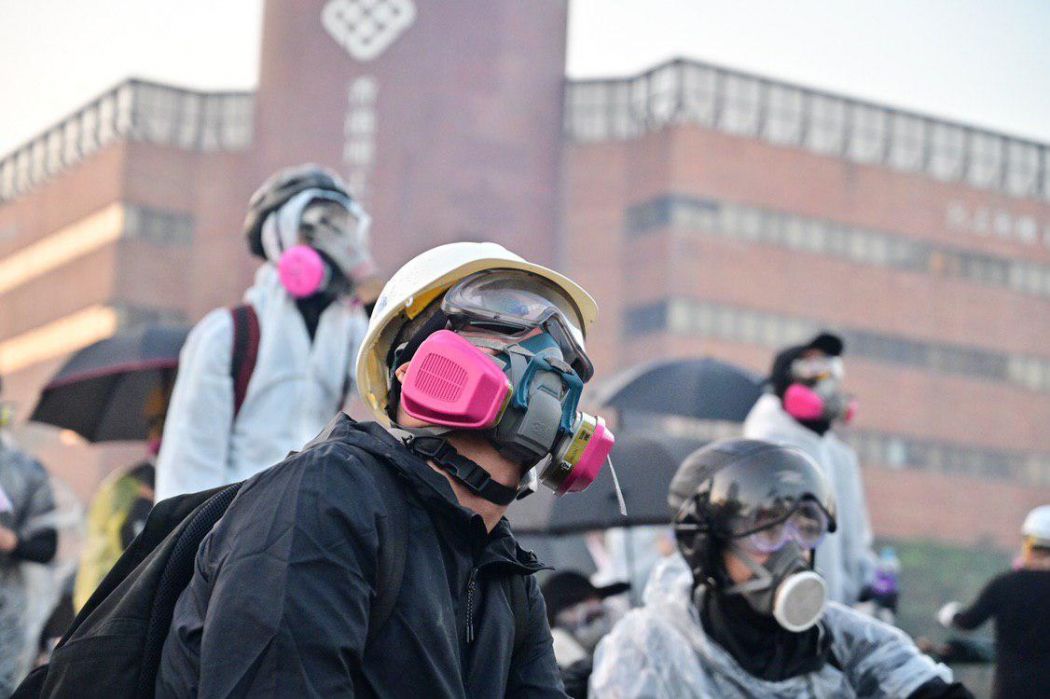
For the first time, the force also used a device mounted on an armoured truck to emit high-pitched noises – which police later identified as a “Long Range Acoustic Device” (LRAD).
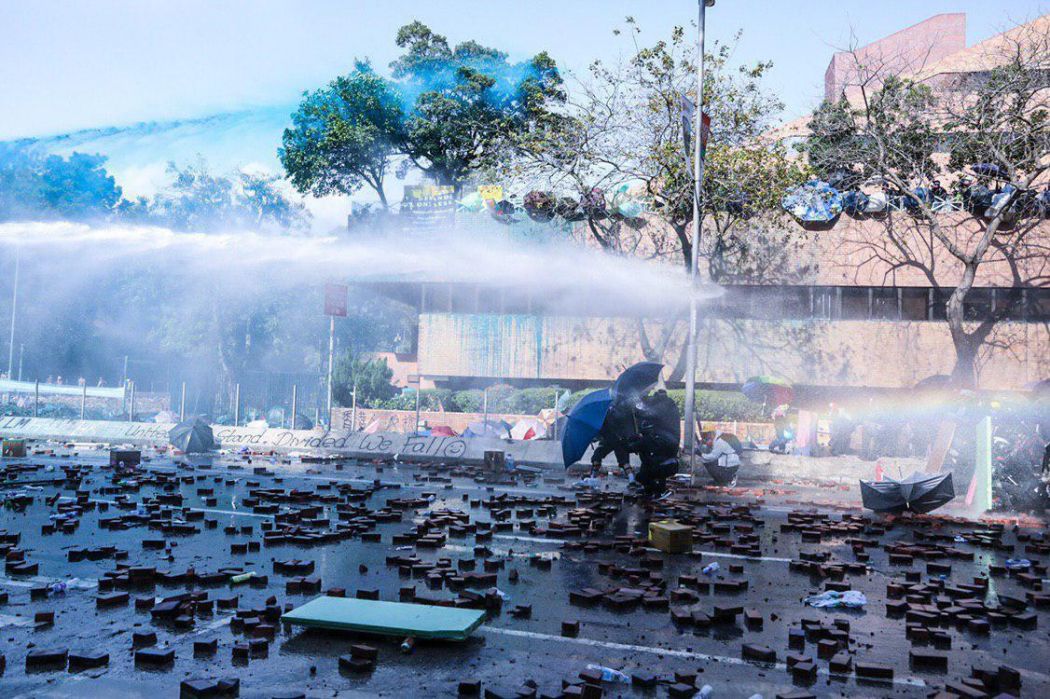
The Hung Hom campus of PolyU has seen pitched battles between protesters and police since Tuesday.

The campus is close to the toll plaza of the Cross-Harbour Tunnel, enabling protesters to block the major crossing for days.
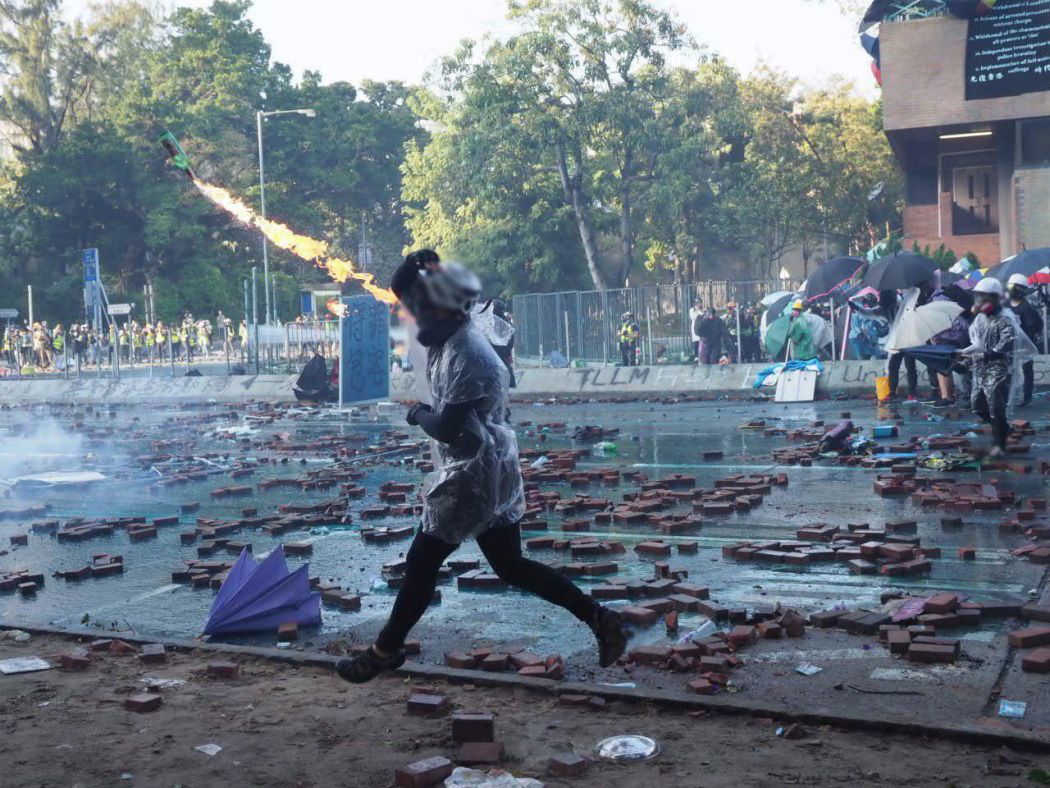
On Sunday, police said a member of its media liaison team – typically dressed in a blue vest – was “struck in the calf by an arrow” at around 2pm.
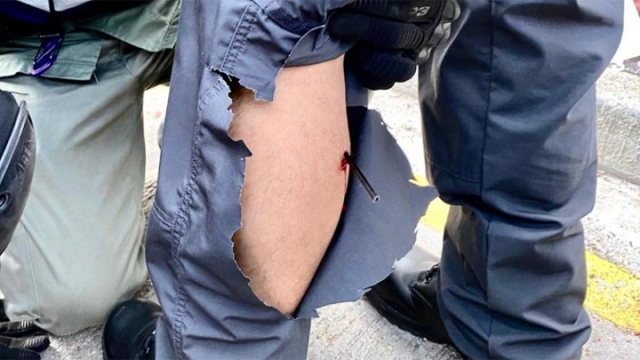
The officer was taken to the hospital in a conscious state.
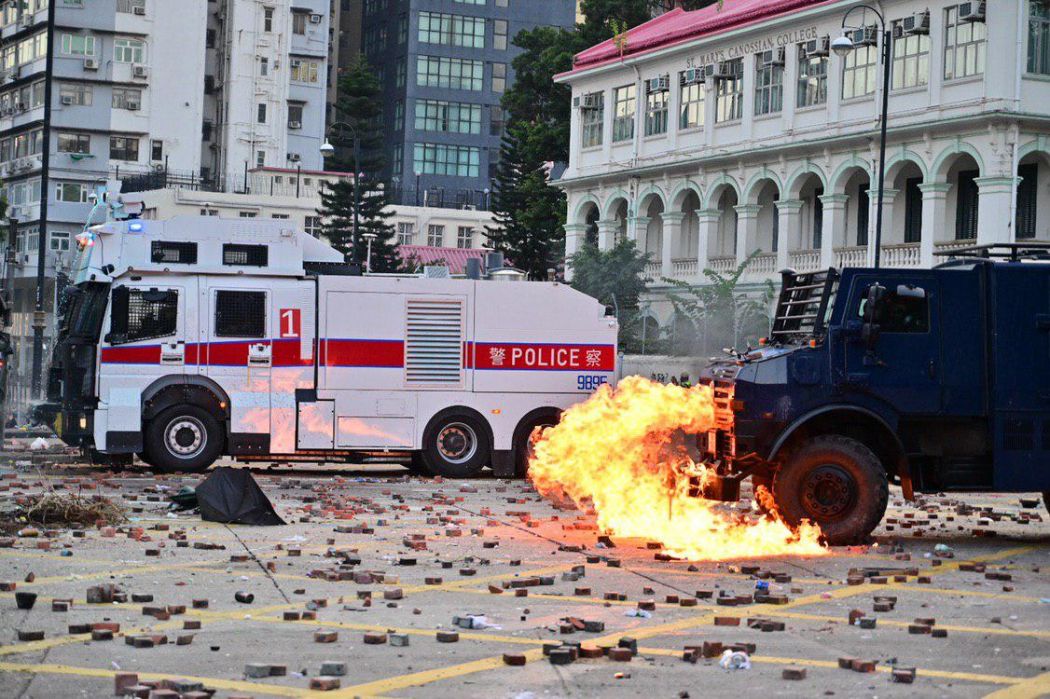
Another officer’s visor was struck by a metal ball, though it did not result in injury, the force added.
“Police warn that the violent activities in the Hong Kong Polytechnic University have escalated to rioting. Anyone who stays behind or assists rioters may be liable to the offence of ‘Taking Part in a Riot’,” the police said in a statement.

Anyone convicted of rioting can be penalised by up to 10 years in jail.

Police have condemned protesters for using “lethal weapons” against officers, including petrol bombs, bows, arrows, bricks and metal balls.
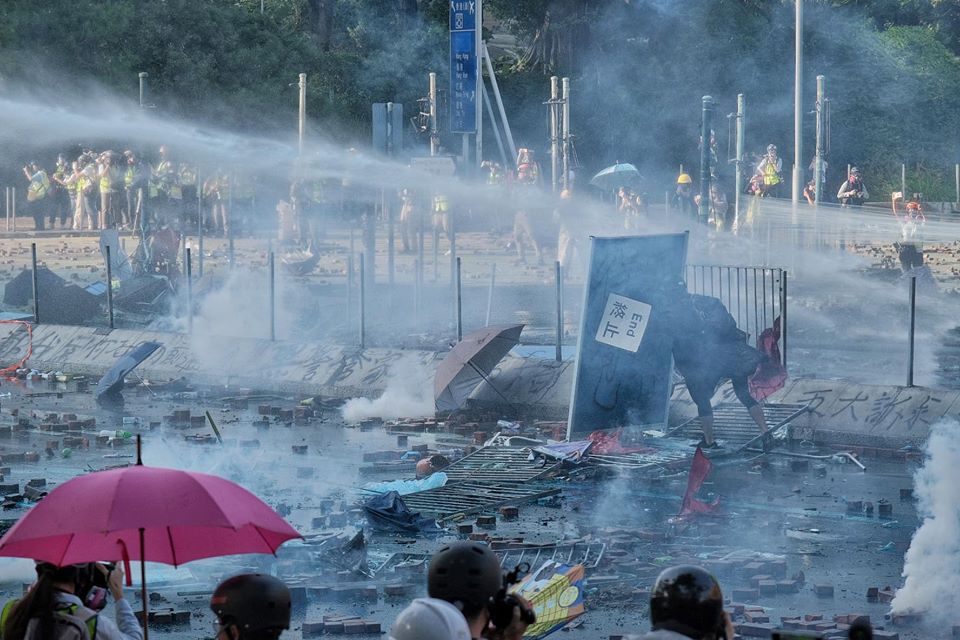
The intersection of Chatham Road South and Cheong Wan Road has been the site of intense fighting, with police firing blue liquid from water cannon trucks and volleys of tear gas.
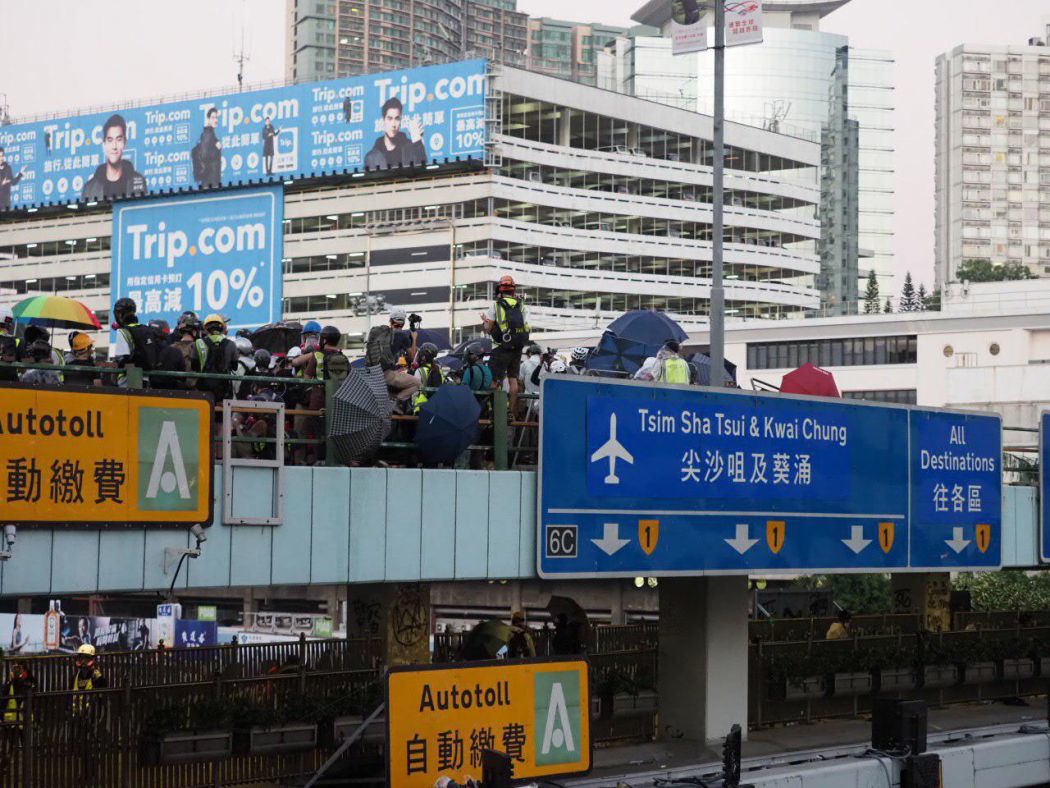
Protesters also threw objects from an elevated position inside the campus and launched projectiles with a makeshift catapult.
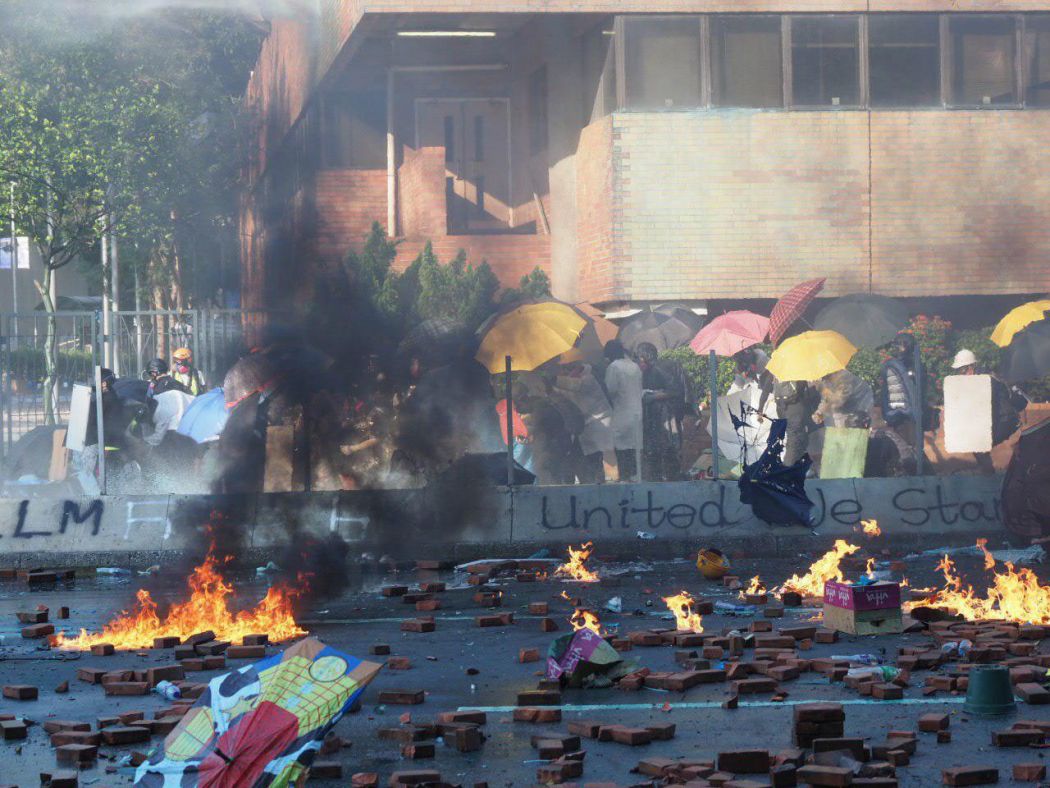
Sonic device ‘not weapon’
Reports suggest that police have tested the use of an LRAD – a device emitting sound waves to cause dizziness to people on the scene – at Polytechnic University.
Photo: CityUSU screenshot. #hongkong pic.twitter.com/8Et30uNn5z
— Hong Kong Free Press (@HongKongFP) November 17, 2019
At around 2:30pm, police used a sonic device mounted on top of an armoured truck. Prior to that, officers warned protesters over a loudspeaker that lethal force may be used.

The City Broadcasting Channel – a new outlet run by students from the City University of Hong Kong – reported that the sonic device was used for about three seconds and caused slight discomfort to its reporter.
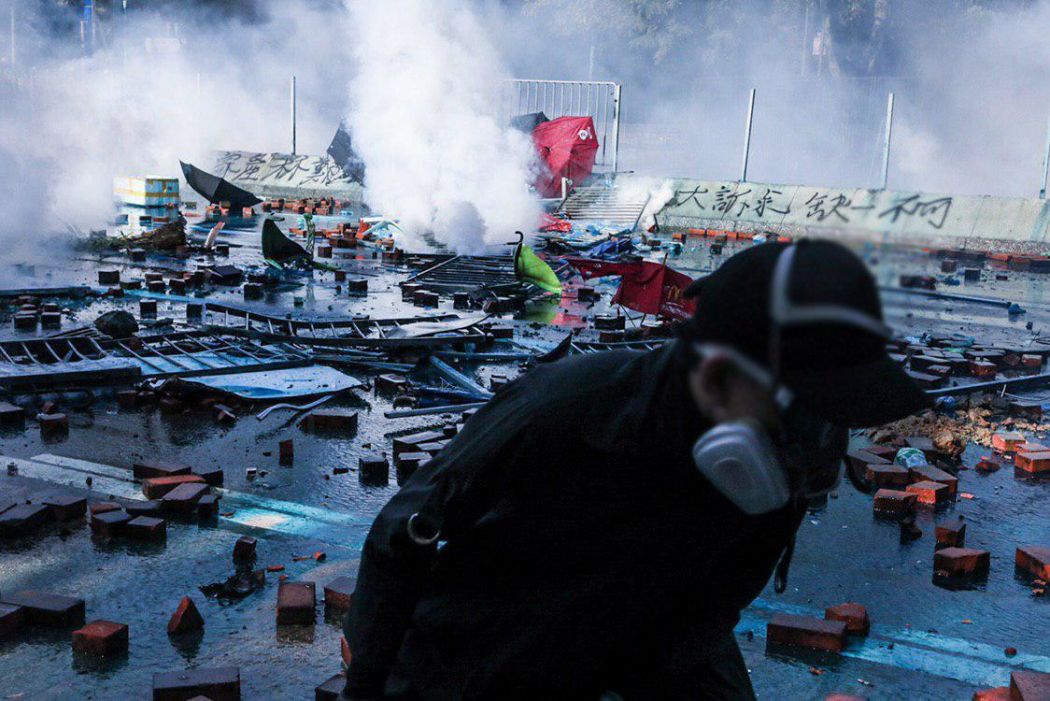
Apple Daily said that its reporter heard three seconds of a “loud, shrill noise” similar to a car alarm.

In a statement, police stressed that the Long Range Acoustic Device was a “broadcasting system but not a weapon.”

“Using the LRAD is to convey important messages over a long-range in a noisy environment,” the force said. “Unlike what is said in individual media reports, the LRAD does not generate ultra-low frequency which will cause dizziness, nausea or loss of sense of direction.”
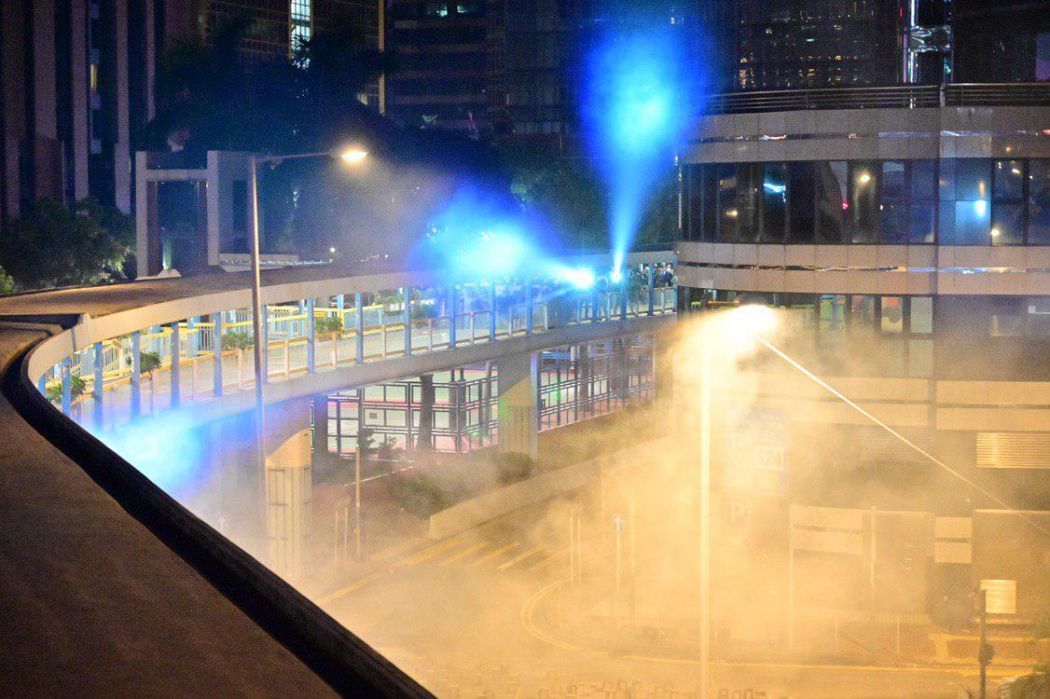
The force has strict guidelines and regulations on the use of the LRAD, the statement added.
Correction: An earlier version of this article stated that the police sonic device was a crowd control tool. Though it can cause hearing impairment if used improperly, the Long Range Acoustic Device is primarily designed to issue long-range audio warnings.
Hong Kong Free Press relies on direct reader support. Help safeguard independent journalism and press freedom as we invest more in freelancers, overtime, safety gear & insurance during this summer’s protests. 10 ways to support us.

